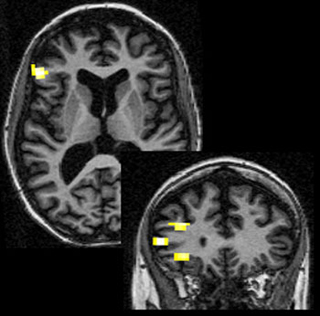
Yellow areas show activation in the frontal cortex of a patient with global amnesia due to medial temporal lobe damage, revealing that the processes that support retrieval from semantic memory remain intact in amnesia. (Image by Prof. Anthony Wagner.)
Instructor(s)
Prof. Anthony Wagner
MIT Course Number
9.93
As Taught In
January IAP 2002
Level
Undergraduate
Course Description
Course Description
This course is offered during the Independent Activities Period (IAP), which is a special 4-week term at MIT that runs from the first week of January until the end of the month.
This survey course is intended to review memory and its impact on our lives. Memories make us who we are, and make us what we are going to become. The loss of memory in amnesia can cause us to lose ourselves.
Memory provides a bridge between past and present. Through memory, past sensations, feelings, and ideas that have dropped from conscious awareness can be subsequently recovered to guide current thought and action. In this manner, memory allows us to locate our car in the parking lot at the end of the day or guides us to avoid retelling the same joke to the same friend. This seminar will focus on how memories are created and controlled such that we are able to remember the past. Recent insights from non-human electrophysiological and human brain imaging research will be emphasized.


